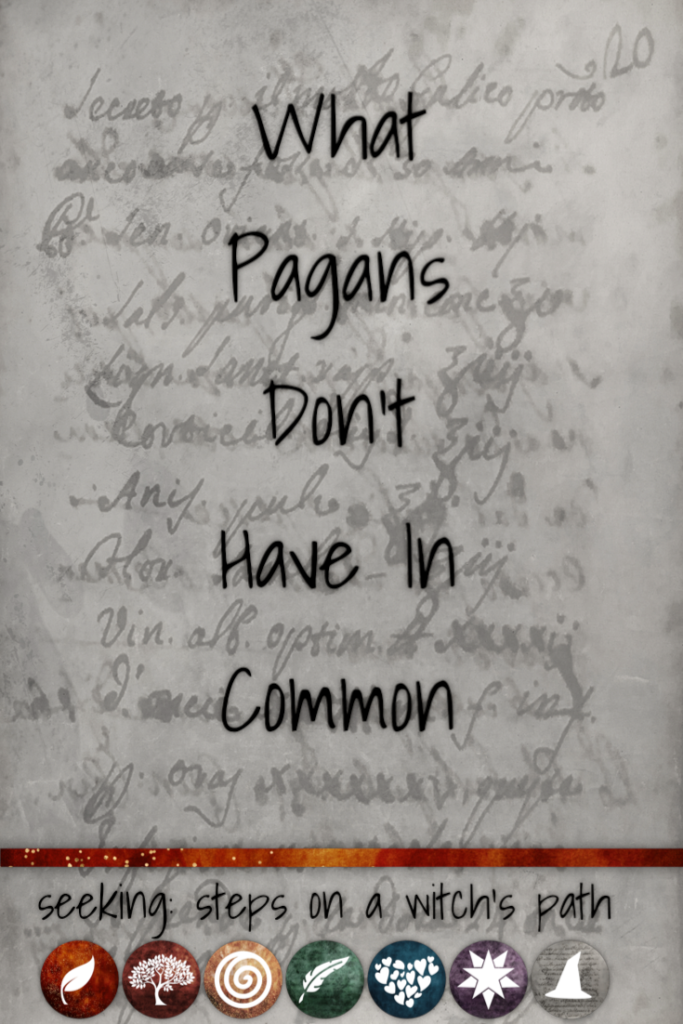Just as there are some things Pagans often have in common, there are some things we don’t reliably share. Some of these may surprise you!

Ritual cycle
While the religious witchcraft paths and Druids often celebrate 8 Sabbats (the solstices, equinoxes, and four agricultural festivals around October 31st, February 2nd, May 1st, and August 2nd, also known as the Wheel of the Year) these dates have no particular meaning to other Pagan religions.
Reconstructionists might celebrate the flooding of the Nile (for Kemetic recons) or a festival for Apollo (for Greek recons.) Some people build personal calendars based on dates and events that they find meaningful. Others might use particular astronomical events and alignments.
I follow the Wheel of the Year (with some additional personal dates of interest), and also do some form of ritual at the new moons and full moons most of the time.
Ritual structure
Religious witchcraft traditions often magically create their ritual space as part of ritual. In other religions, this is not part of the process. Likewise, what a ritual involves, the parts of a ritual, or the order they come in, may vary hugely between different Pagan religions.
My witchcraft tradition casts circle. I use a circle for some rituals in my personal practice, but mostly do my work in my home, which has ongoing magical workings around it that take on the functions of a circle.
Size
While witchcraft covens are traditionally small (under 13 people), there are larger communities springing up all over the place. Many reconstructionist groups are associated with larger organisations.
My coven is still in the building phase (as I write this in mid-2020), and probably will be for another year or two. I’m aiming at a steady stable group of 5-8 people. I also do some things in the larger community, but not regularly.
Structure and organisation
Many religious witchcraft groups are autonomous: they’re lead by people trained as designated within that group or tradition, who then make their own decisions. Other members of the tradition may disagree with an action (and respond personally to it), but there is no ‘boss’ (like a Pope or Council of Churches) to turn to.
On the other hand, some reconstructionist groups are developing a larger heirarchy and structure for their members.
I am a third degree priestess in my tradition. We have some agreements about how things work in the tradition. In other areas, I can (with other people in the group, as relevant) decide how to do things. My personal practice is also more varied.
Focus
Different groups focus on or care about different things. Some groups focus on self-empowerment or transformation, others on a greater community goal.
Some focus on magic, on religious practice, or a combination of both. Some groups might honour or work with different deities at each ritual, others on honouring and working with specific deities all the time.
My witchcraft tradition focuses on transformation. My coven is about learning, centring magic and the numinous in our lives. We honour and work with different deities, depending on the ritual.
‘Earth centered’
Not all Pagan groups focus on the earth.
Some paths, like religious witchcraft, pay particular attention to the turning of the seasons. Some, because of the belief that all things are connected, have a particular focus on ecology. While these are common conceptions of Pagan religions, many have a very different take on it. It’s not that they think the earth is bad – but their ritual year is based on other things, or their ritual has a different focus.

Last edited December 23, 2016



